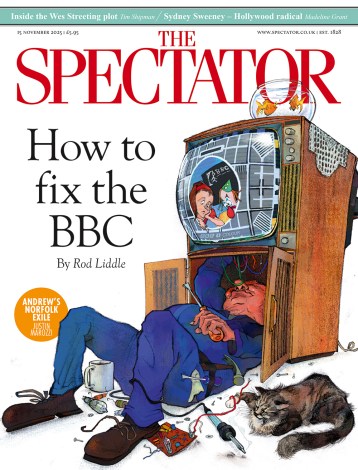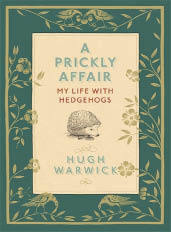A Prickly Affair, by Hugh Warwick
At a time when most of his fellow-mystics deplored this sinful world and longed to leave it, 17th-century Thomas Traherne ecstatically celebrated the world and confirmed his religious faith by observing its wonders. ‘The Ant is a great Miracle in a little room . . . its Limbs and Members are as Miraculous as those of a Lion or Tygre.’
Of late there has been an astonishing number of books that advocate this enthusiasm, this particularity — a book about the behaviour of rooks, a book about a single, nearly tame rook, even ‘conversations’ with particular trees. Now it is hedgehogs. Written too often in ‘don’t-let’s-scare-the- kiddies’ prose, these books are nevertheless serious; we have, they suggest, strayed from nature unhealthily far, suffered what one American naturalist has called ‘nature-deficit-disorder’.
Hugh Warwick seldom condescends in order to convince — although his title might make a reader fear so. Written lightly enough, his book is by a trained ecologist who has led such seminars as ‘Sentimentality, the Enemy of Ecology’. His first semi-professional contract was the subject of his university degree thesis: hedgehogs in Devon which had been released back into the wild from RSPCA hospitals. Did they survive? The only way to find out was to put radio tags on them, track them, catch them, weigh them, and release them again. This was dirty, sleepless work (they are nocturnal creatures) over a long period. Verdict: they did survive.
Twenty years later he was at it again, on North Ronaldsay, one of the Orkney islands. There were reported to be 10,000 hedgehogs on the tiny island, eating the eggs of ground-laying birds (hedgehogs do). So he tagged them, counted, computed that the real number was between 414 and 614. As for the decline in bird population, his survey discovered a shortage of sand-eels, the birds’ food; that climate change was forcing the plankton on which sand-eels feed further north. Verdict on whether the hedgehogs made the terns decline in numbers: open.
On South Uist in the Hebrides, Scottish National Heritage declared a cull on hedgehogs. Warwick opposed it as unnnecessary. This caused a sort of war between masked cullers and secret hedgehog-smugglers. Comic, in a way, because both parties were trying to do the right thing. SNH said the hedgehogs would not survive transportation to mainland Britain, therefore had to be killed. So some were smuggled out, others culled ‘at a cost of £1,363 per hedgehog’, claims Warwick. Warwick tagged the ones rescued to a park in north Ayrshire. The result was the same as all those years before. They survived.
As in all quasi-religious (or indeed fully religious) quarrels, some can go mad. In the Nineties in the USA there was a craze for hedgehogs as pets. Warwick attended the Rainbow Bridge Ceremony in Denver, which celebrated a Heavenly Reunion for those whose pets had died (Kleenex provided). ‘Happy kisses rain upon your face — then you cross the Rainbow Bridge together.’
Warwick tells us how to make a hedgehog-friendly garden. This is a useful and entertaining book, and unsentimental. If Warwick had found that the animals did not survive transportation, he would have supported the cull. Tough love.





Comments